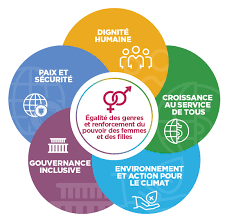Despite talking a good game when it comes to foreign aid, Canada is still not stepping up to the plate. Baseball metaphors are not my forte, but it is clear that Canada is refusing to contribute its fair share of development assistance. In fact, the figures for 2019, released earlier today, reveal that Canada under the current government is less generous than the previous year, less generous than the Harper government and less generous than its peers.
Under the Conservatives (2006-2015), Canada’s official development assistance (ODA) averaged 0.30% of gross national income (GNI), the standard measure used to compare aid levels. When the Liberals were first elected in 2015, ODA stood at 0.28% of GNI, a ratio that the Trudeau government has never surpassed. In fact, in 2019, that figure fell to 0.27%, down from 0.28% the previous year.
If one excludes the cost of settling refugees in Canada – which can technically be included, but which not all countries choose to do – the percentage drops to 0.24%. In Canada’s case, this expenditure – money spent in Canada, not transferred to developing countries – amounted to 10.2% of reported ODA.
So under the Trudeau government, Canada is less generous than under Harper. But how does it compare to other countries?
According to data from Organisation for Economic Co-operation and Development (OECD), Canadian aid measured in US dollars actually increased by 0.5% from 2018 to 2019, by less than the rate of inflation and only a third of the 1.4% collective increase of the 29 countries that belong to the OECD’s Development Assistance Committee. Together, those countries contribute 0.30% of their GNI in foreign aid. Thus Canada can’t even claim to be an average donor in terms of generosity.
Of note, Norway and Ireland, Canada’s “rivals” for a seat on the UN Security Council, respectively increased their aid by 9.7% and 4.5% in 2019. They are providing foreign aid equivalent to 1.02% and 0.31% of GNI, easily outshining Canada.
The COVID-19 pandemic starkly illustrates how development is not a charitable endeavour but a global imperative. As the OECD notes, “The way the COVID-19 pandemic is unfolding will have long lasting repercussions on developing countries that go well beyond any direct effects on their health care systems and will affect key sectors that generate revenue… as well as create major socio-economic disruptions”.
It is clearer than ever that international cooperation is of crucial importance, including for Canada’s long-term interests. Canada has reacted quickly to COVID-related needs abroad, but it is unclear whether any of those contributions constitute new money, rather than funds simply taken from the existing aid budget.
Even before the current health crisis erupted, the 2019 Liberal Party election platform vaguely promised “to increase Canada’s international development assistance every year towards 2030”. Ironically, the COVID-related fall in GNI will boost the ODA ratio for 2020 without the government having to contribute any new funds. However, the postponed federal Budget 2020 will reveal whether the government is taking its commitment seriously or whether it will make only tokenistic budget increases.
The aid figures for 2019 released today focus on aid quantity. Although aid quality is equally if not more important than its quantity, the data aid flows still provide an important portrait of Canadian aid and how it compares.
Canada is unlikely to return to being one of the world’s most generous aid donors anytime soon, let alone meet its five-decades-old target of 0.7% of GNI. Despite its lofty rhetoric, the current government doesn’t even appear to be aiming to provide more aid than the Harper government did or be a better-than-average donor country.
Stephen Brown is Professor of Political Science at the University of Ottawa.


Recent Comments